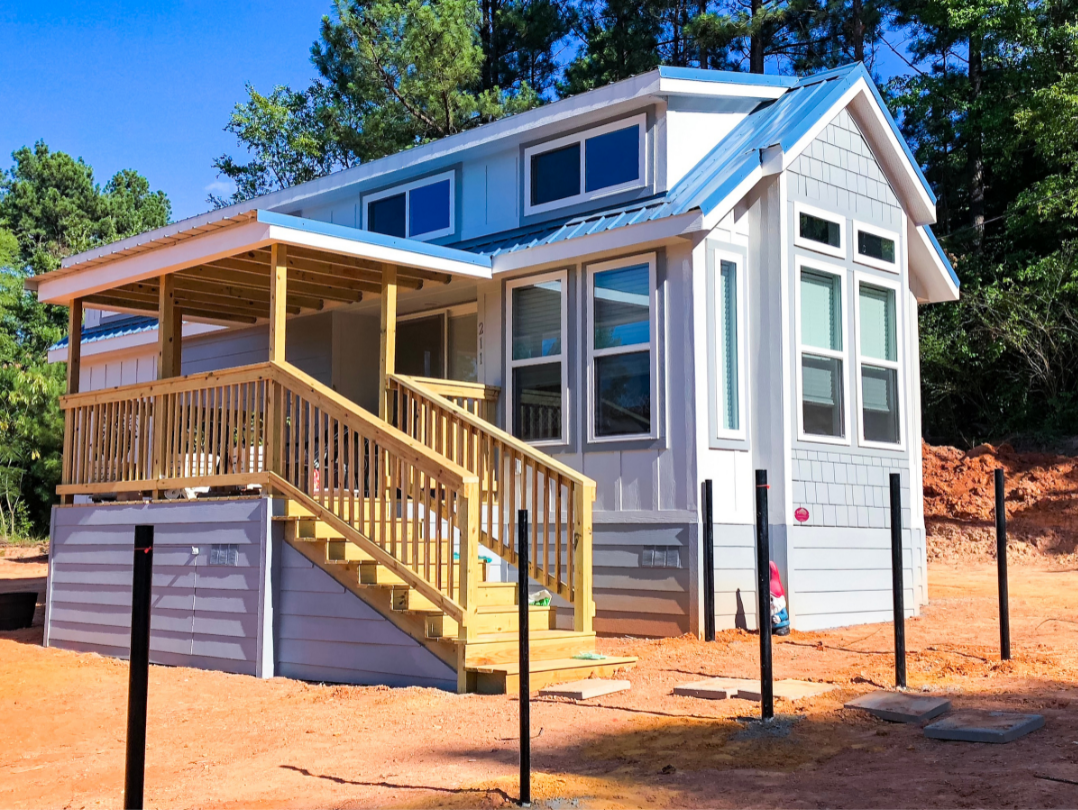
Tiny homes have gained significant popularity in recent years as people embrace the minimalist lifestyle and seek more sustainable housing options. Building a tiny home can be an exciting and rewarding experience, but it’s essential to approach the construction process with care and attention to detail. To help you navigate this journey successfully, we’ve compiled a list of common tiny home construction mistakes to avoid.
Using the Wrong Trailer
Choosing the right trailer is crucial for the success of your tiny home project. Using a reclaimed RV trailer or one obtained for free may be tempting, but this decision can have severe consequences. Building on an inadequate trailer can lead to serious structural issues, compromising your home’s integrity. Obtaining a title and securing insurance coverage may be challenging. Invest in a professionally made trailer specifically designed for tiny homes, allocating a budget of $3,500 to $5,000 for a reliable foundation.
Ignoring Zoning Laws and Building Codes
Compliance with local zoning laws and building codes is essential when constructing a tiny home. Avoid assuming that you can fly under the radar or neglect these regulations. Engage proactively with code and zoning officials to ensure your tiny home meets the required standards. Familiarize yourself with applicable building codes, such as Appendix Q, which provides guidelines for tiny houses. Complying with these regulations will prevent future conflicts and ensure a smooth resale process if needed.
Staying Within Legal Width Limits
As a first-time tiny home builder, it’s common to be filled with creative ideas for maximizing space. Considering legal width limits is crucial, especially when building on a trailer. Standard tiny house trailers typically have a maximum legal road limit width of 102 inches, meaning the actual house width should be around 90 inches to account for the walls. Many builders overlook additional factors such as siding, sheathing, drip edge, and roof overhang, which increase the overall width. Failing to stay within the legal limit can result in inconveniences, renovations, and complications when towing or acquiring necessary permits. Remember to account for the entire width of your tiny home, ensuring compliance with road regulations.
Neglecting Moisture Mitigation
Moisture mitigation is often overlooked but plays a significant role in maintaining a healthy living environment within your tiny home. Cooking, showers, sweat, and breathing generate moisture that, if trapped inside an airtight space, can lead to mold growth and poor air quality. Design proper ventilation, heating, and cooling systems to ensure adequate airflow and prevent moisture-related issues. Remember that a tiny home requires all the infrastructure of a larger house but on a smaller scale.
Considering Weight of Construction Materials
Estimating the weight of building materials and interior decorations is crucial to prevent exceeding the load-bearing capacity of your tiny home. It is essential to account for the weight of these components to maintain the structure and maintain its mobility. Opt for lightweight alternatives to heavy materials, such as porcelain farm sinks or cast iron tubs. Seek ways to save weight through smart framing techniques and using lighter alternatives to materials like gypsum board. Monitor the overall weight of your build and aim to save every pound possible.
Prioritizing Living Room Comfort
Creating a comfortable living room space in your tiny home is crucial for a cozy and enjoyable living experience. Avoid compromising on comfort by opting for uncomfortable bench seats. Instead, explore options from the RV industry, such as recliners and fold-out sofas, to provide adequate seating comfort. Consider furniture options during the design phase to ensure you have enough space for comfortable seating arrangements. Invest in high-quality mattresses and cushions for beds and convertible furniture pieces.
Neglecting Headers for Openings
When designing your tiny home, it’s important to consider the openings created by windows and doors. These gaps in the support structure can compromise its integrity. Headers and horizontal beams placed above windows and doors redistribute the weight and ensure proper load-bearing distribution. Failing to include headers can lead to structural problems down the line. Remember to incorporate headers into your design to maintain the strength and stability of your tiny home while accommodating windows and doors.
Emphasizing the Importance of Planning
Building a tiny home without a well-thought-out plan can lead to costly mistakes and wasted time. Research and educate yourself on the building process, attend workshops, and seek guidance from experienced builders. Create a realistic budget, including a contingency fund, and find a suitable location for construction. Building a support network of fellow builders or mentors can provide valuable advice and moral support. With a comprehensive plan in place, you’ll be better equipped to anticipate and address potential challenges, resulting in a smoother and more efficient build.
Realistic Expectations
Having realistic expectations about what a tiny house can offer is important. Recognize that a tiny home’s limited space means certain trade-offs compared to a traditional house. Noise and smells from the kitchen can permeate the entire space, and you’ll be in close proximity to others in the bathroom. Clutter can accumulate quickly in a small space, so maintaining organization is essential. Consider the number of occupants carefully, as overcrowding can lead to discomfort and lack of privacy—plan for breaks from the confined space by utilizing outdoor areas or public amenities when needed.
Conclusion
Constructing a tiny home is an adventure that requires careful planning, attention to detail, and a willingness to learn. By avoiding the common mistakes mentioned above, you can increase your chances of building a beautiful, functional, and durable tiny home that perfectly suits your needs. Take the time to research, consult professionals, and prioritize quality throughout the construction process. Remember, the effort you put into the planning and construction stages will pay off in the form of a comfortable and efficient living space that you can enjoy for years to come.
